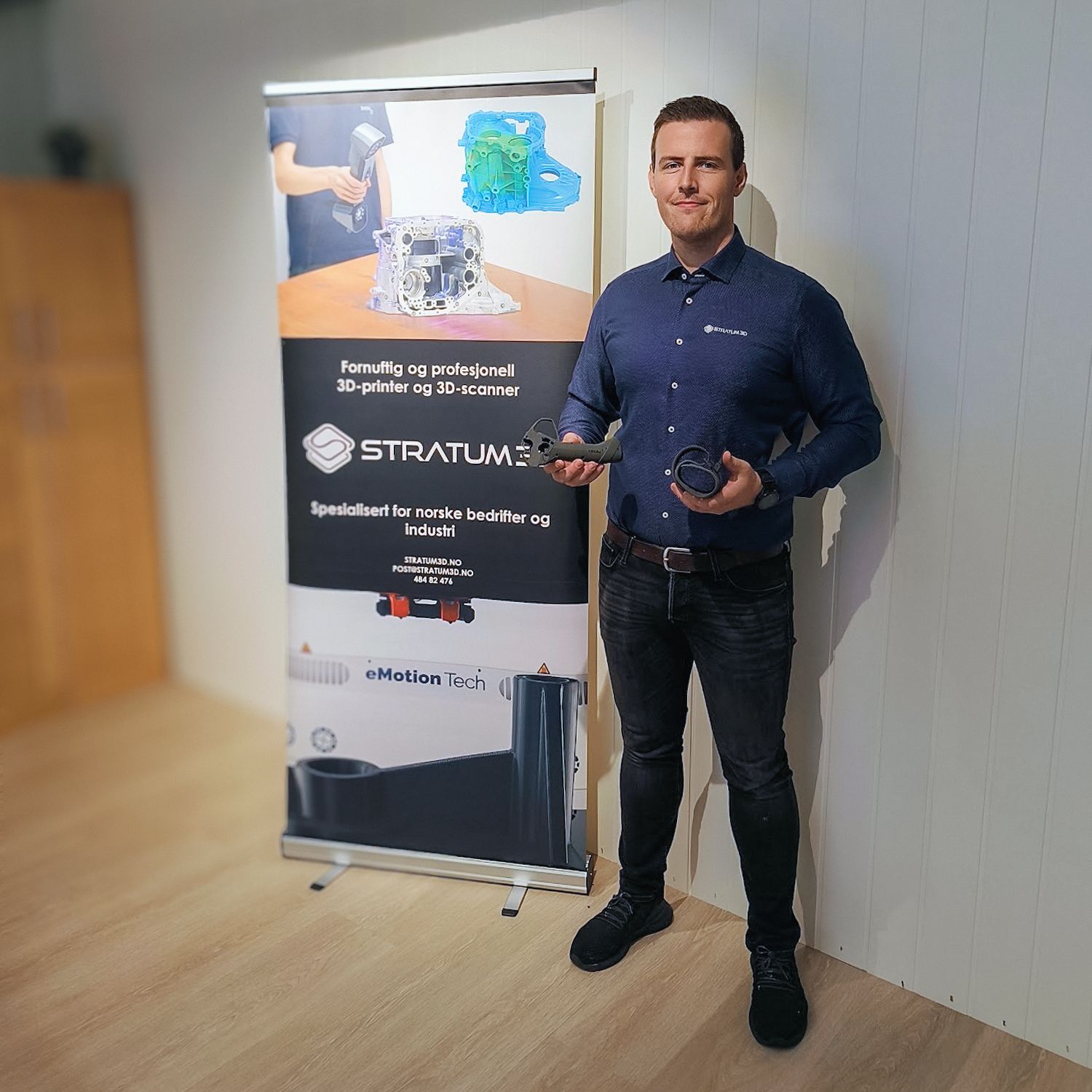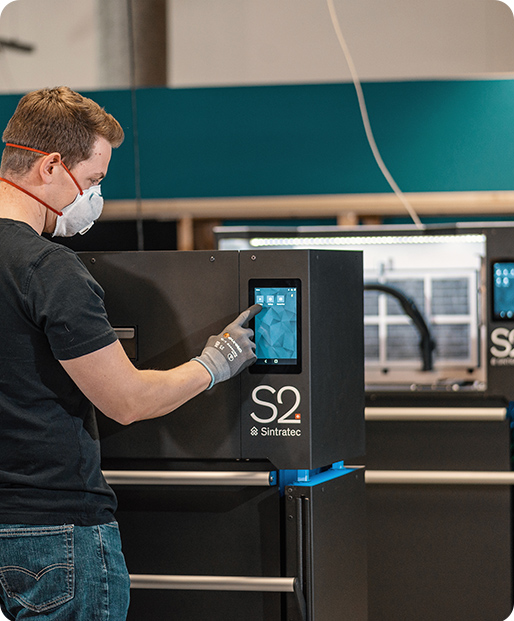Sintratec, a Swiss company known for its low-cost selective laser sintering (SLS) technology, is making inroads into the Scandinavian market. Thanks to a partnership with Stratum3D, its high-tech systems now have a strong distribution partner in Norway. This collaboration could introduce significant advances in additive manufacturing (AM) within the Scandinavian region, providing businesses with innovative, scalable, and cost-effective solutions tailored to their needs.
Building on this, Sintratec’s proprietary All Material Platform (AMP) brings added technical capabilities to the partnership. Geared toward industrial applications, these SLS systems allow for producing high-quality polymer parts with intricate geometries and internal structures. According to the brand, the modular design of the AMP enables scalability, ideal for both small operations and larger enterprises. Additionally, its streamlined material-changing process saves time and costs for businesses, making it versatile for projects that require different material properties.
While there are other SLS printers on the market, Sintratec says its AMP is designed to be modular and scalable, providing a unique level of flexibility for industrial applications. This makes it easier for businesses to adapt the system to their specific needs, whether a smaller operation looking for entry-level SLS capabilities or a larger enterprise needs a more extensive, scalable setup. Sintratec states its SLS technology excels at creating highly complex and durable components.
Unlike traditional fused deposition modeling (FDM) methods, Sintratec’s SLS systems enable the production of parts that require no support structures, freeing designers to be more creative and minimizing the need for post-processing work. This technology has been deployed in various sectors, from automotive to medical devices, where high performance and precise geometries are critical. Sintratec’s AMP modules further enhance this, enabling rapid material changes without significant downtime, thus keeping production lines efficient, says the brand.
 Stratum3D CEO John Henrik Bergene. Image courtesy of Sintratec/Stratum3D.
Stratum3D CEO John Henrik Bergene. Image courtesy of Sintratec/Stratum3D.On the other side of the equation, Stratum3D is a Norwegian company based near Oslo, focusing on expanding access to 3D printing technologies. They offer a compelling cost-performance ratio with an extensive portfolio of 3D printers, scanners, and associated materials, mainly focusing on technical plastic materials. These materials are suited for specialized applications requiring high strength, chemical resistance, or other specific needs, such as static electricity and flame retardance. Stratum3D already distributes well-known brands like Prusa, Nexa3D, Essentium, and WASP and is now extending its product range to include Sintratec’s SLS systems.
This broadening of their product range was sought after by Stratum3D CEO John Henrik Bergene. He states, “Excited to announce our partnership with Sintratec, a pioneer in high-quality SLS 3D printing technology. Together, we’re bringing innovation and precision to the Norwegian market. Explore limitless possibilities with Stratum3D and Sintratec – shaping the future, one layer at a time.”
In turn, this partnership is a significant milestone for Sintratec in its European expansion strategy, extending its footprint to include Norway—a country known for its technological advancements. It also complements a portfolio with countries like Italy, Spain, and Croatia.
 Sintratec machines. Image courtesy of Sintratec.
Sintratec machines. Image courtesy of Sintratec.Scandinavia has a reputation for embracing technology and innovation. For example, Equinor, a major Norwegian energy company, has integrated 3D printing into its oil and gas operations to such an extent that the technology now figures in planning new oil fields. The firm is also part of a collaborative venture aimed at using 3D printing for underwater pipeline repairs, which has the potential to reduce costs and greenhouse gas emissions significantly. It even has an AM Centre of Excellence on site. The company’s head of 3D printing, Brede Lærum, has expressed that there are plenty of opportunities on the Norwegian continental shelf through 3D printing.
Another noteworthy example is Norrde, a Norwegian company specializing in land-based fish farming equipment. Partnering with ADDICT3D and ADAXIS, Norrde implemented an advanced robotic 3D printing system to improve efficiency and customization. Its technology allows pellet-based materials to be fed into the printer at rates of up to 40 kilograms per hour and can print objects up to four meters in height. The adoption of 3D printing has enabled Norrde to manufacture complex components, like a specialized “jet pipe” for fish tanks, more efficiently than traditional methods. The company is also exploring the use of recycled materials and has applied for a patent related to carbon dioxide removal in fish tanks, potentially leading to significant energy savings.
These 3D printing projects in Norway illustrate how the technology is a time and money-saver and good for the environment. This is changing how businesses work in Norway and could do the same elsewhere in Scandinavia. Adding to this momentum, the entry of Sintratec’s high-quality SLS systems into Norway via Stratum3D could further influence a range of industries, from healthcare to aerospace. Stratum3D’s established relationships and wide range of products make them a suitable partner for Sintratec in the Scandinavian market. With access to Sintratec’s AMP modules, businesses in the region can look forward to more efficient material changes and streamlined industrial 3D printing.
With access to Sintratec’s AMP modules, businesses in the region can look forward to streamlined material changes and industrial-grade 3D printing solutions. This collaboration offers Norwegian small and medium-sized enterprises more affordable access to high-quality AM solutions. Both Sintratec and Stratum3D bring unique strengths to this partnership, and together, they may introduce a new level of quality and innovation to the local market.
Subscribe to Our Email Newsletter
Stay up-to-date on all the latest news from the 3D printing industry and receive information and offers from third party vendors.
Print Services
Upload your 3D Models and get them printed quickly and efficiently.
You May Also Like
Heating Up: 3D Systems’ Scott Green Discusses 3D Printing’s Potential in the Data Center Industry
The relentless rise of NVIDIA, the steadily increasing pledges of major private and public investments in national infrastructure projects around the world, and the general cultural obsession with AI have...
3DPOD 260: John Hart on VulcanForms, MIT, Desktop Metal and More
John Hart is a Professor at MIT; he´s also the director of the Laboratory for Manufacturing and Productivity as well as the director of the Center for Advanced Production Technologies....
Etsy Design Rule Change Reduces Selection of 3D Printed Goods
Online marketplace Etsy has implemented a rule change requiring all 3D printed goods on the site to be original designs. The update to the site’s Creativity Standards states, ¨Items produced using...
E-Beam OEM Wayland Additive Partners with USC Racing to 3D Print Titanium Exhaust Collector
Every year, standards organization SAE International holds a competition called Formula SAE, in which students from both undergraduate and graduate programs design, build, and race small formula-style race cars. For...

































